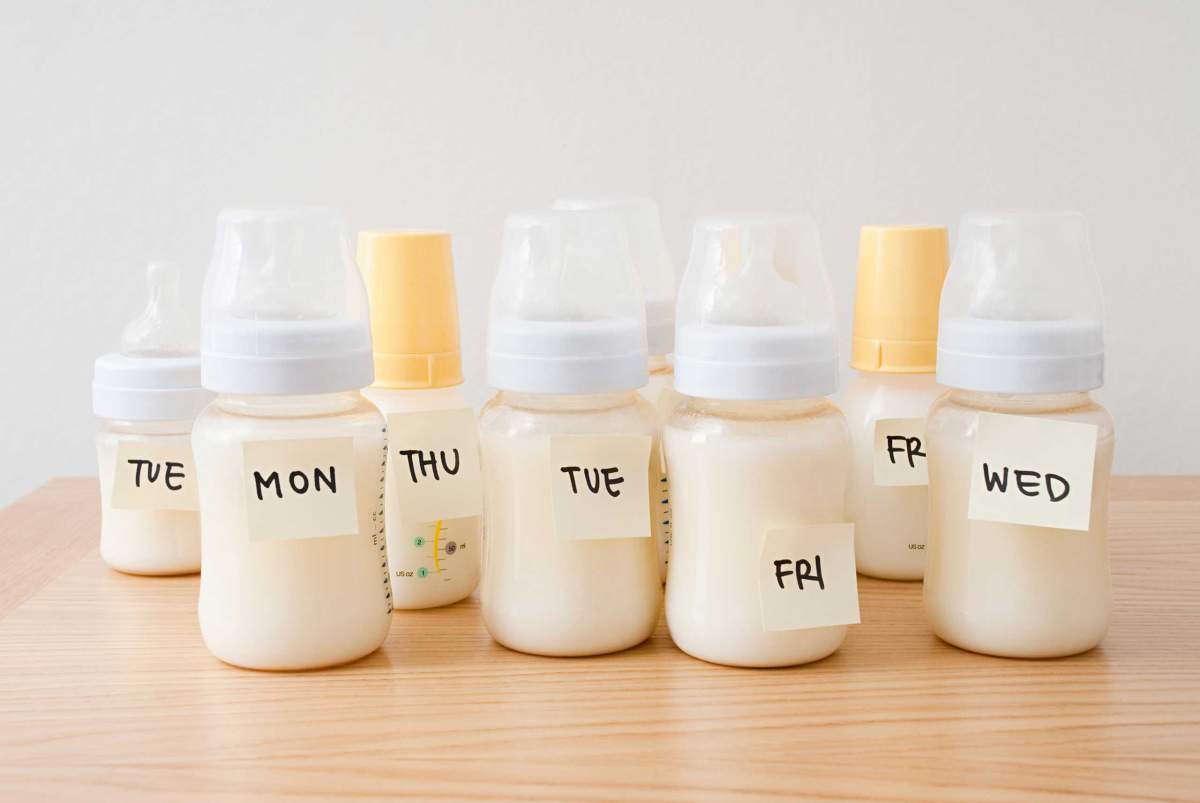
How to Store Breast Milk for Your Baby
There are many reasons why a Mom may wish to store her milk. The most common scenario is when you want to go exclusive but you are a busy Mom. Perhaps you have a career or a job or run a business and cant have your baby with you all the time. Of course, babies that are well breastfed, either exclusively or even if not exclusively but have quality breastfeeding such that your baby gets more breast milk than formula, such babies are less likely to fall ill, and generally look better and have a good start.
Faced a situation like this, the best thing to do would be to express the milk (pump) and store. Achieving this is easy with an efficient breast milk pump like the Mothersbond SuperFast pump. But after pumping, we need to know how to preserve the milk to retain its quality. There is so much information on how to store breast milk but they are mainly for developed countries where power supply is uninterrupted and climates are cooler. But for us in warmer climates, and Africa, especially where we cant always guarantee power supply, the rules are slightly different.
.1 If you’re pumping to store for later, refrigerate pumped milk as soon as possible.
Milk, like all body fluids have a short life without preservation. If it’s not refrigerated immediately, it becomes sour and that would affect the taste, or alter its composition; it could also affect your baby’s health and digestion. The milk could even start to smell. Now also bear in mind that refrigeration if not done immediately, there is no need doing so when you remember later. It’s better to extract another which you can now do the right thing. Don’t put milk that has been un-refrigerated for several hours into the fridge.
Also, if pumping several sessions and intend to combine all, try to combine them at same temperatures. What this means is that when adding more milk to same container of already expressed milk, be sure that if you already refrigerated the first set, try to refrigerate the fresh ones to be same temperature before adding them together.
.2 Breast milk can be stored at room temperature for 3-4 hours without refrigeration. If the room is air conditioned, it can be stored up to 6 hours. In the refrigerator, breast milk can stay 3-7 days. In the Freezer it can stay up to 6 months. These dates are for an environment where there is constant power supply and the fridge temperature is fairly constant.
If your power supply at the time of storing milk IS NOT constant, please store in the fridge for a maximum of 2-4days and in the freezer for 1-2months. Provided the fridge remains cold. Restrict opening and closing of the fridge if you have stored milk there.
Do not expose breast milk to prolonged sunlight or keep in a part of the room where sunlight can heat on it directly for example on the window of your room or car. If you express milk and take it out with you, take note of the time you took it out. And dont feed baby with it more than 2-4hours. This is if you cant breastfeed directly.
If you have to extract for long periods, let them all be in the freezer and you take them out as the need arises. You should have several bottles or storage bags as the case may be. Anyone you bring out from the freezer can’t go back to the freezer after it melts. Dispose it if baby can’t finish it. So it’s best to know the quantity your baby consumes each time and make that the storage quantity you keep. So if your baby eats 80mls, let your default storage quantity be 80mls. This is just for example.
.3 Do not Microwave the milk.
After bringing out the milk from the freezer or refrigerator and it’s taking time to melt, the temptation comes to hasten things up and the microwave is one of the first places considered. This shouldn’t be. Microwave can make some parts of the milk extremely hot; it can also change the composition. Please keep the milk at room temperature to allow it melt on its own before warming. If you are worried that baby is crying because of hunger, please find ways to pacify if you cant breastfeed directly. Better still, use a baby bottle warmer or tightly seal the bottle of milk and place in a bowl or cup of warm water.
.4 Date your milk so you know when it was pumped.
Time gets in the way for everyone and we may lose track of when the milk was expressed. A typical example when this happens a lot is when mommy is preparing for a trip in a few days’ time or she’s about to resume work after maternity leave, or weekends preceding a work week. So in the days leading to that, she begins pumping gradually so that she can have enough for baby to use when she is away. Doing this over a period of days or weeks makes it possible to mix things up. So dating them accordingly really helps. Start feeding baby from the older ones.
.5 Never place milk in the door of the freezer or refrigerator door. It can get warm there. You want to be certain the milk is either cool or frozen, so store it deep in the fridge where the coolness is coming from. These preferred temperatures can’t be guaranteed in the door section of either fridge or freezer.
.6 Thaw breast milk in warm water rather than boiling water
It is wrong to use hot water to defrost milk. The recommended best practice is warm water to get it to a warm temperature or simply leave it at room temperature although it may take long for a well frozen milk to fully melt, before warming it in warm water. Changing the temperature suddenly from frozen to very hot could alter the composition of the milk. Never boil breast milk either for warming or for preservation. It destroys the nutrients in it.
.7 Never refreeze thawed breast milk.
We have already said that if milk is frozen it can be stored for long periods, but once frozen melts back to liquid, it has to be consumed or disposed of. Please do not refreeze thawed milk. A common situation when this happens is when you need to make space in the freezer for something else, you could think that keeping it in the door of the freezer is enough. It isn’t. Or you take it out to the refrigerator section with the intention of refreezing later when there’s space.
Finally, we know exclusive breastfeeding is almost impossible for busy moms if you don’t have a breast pump. For moms interested in getting a pump, we suggest getting an electric pump that does the job quickly and protects your breast from sagging. And if sagged already, it can give a gentle lift as you use it for expressing milk. The Mothersbond Superfast Electric Pump is one we recommend. It is very fast; and also helps your breasts look better. It would save you time especially those days when you are rushing…funny enough, we are rushing every work day.
Finally, if you are a new mom and not so happy with post-partum-belly, consider getting our 3 in 1 post pregnancy abdominal binder. Its so nice and we have been getting a lot of positive feedback from users.
Breastpump costs N26000.
Abdominal binder costs N10,000. Either one, there’s an extra cost for delivery.
This post is by Mothersbond and we are available to help in anyway we can, and to answer any questions you may have. Our goal is to ensure you enjoy bonding with your child.
This post is a copyrighted material.
Breast Pump
Abdominal Binder
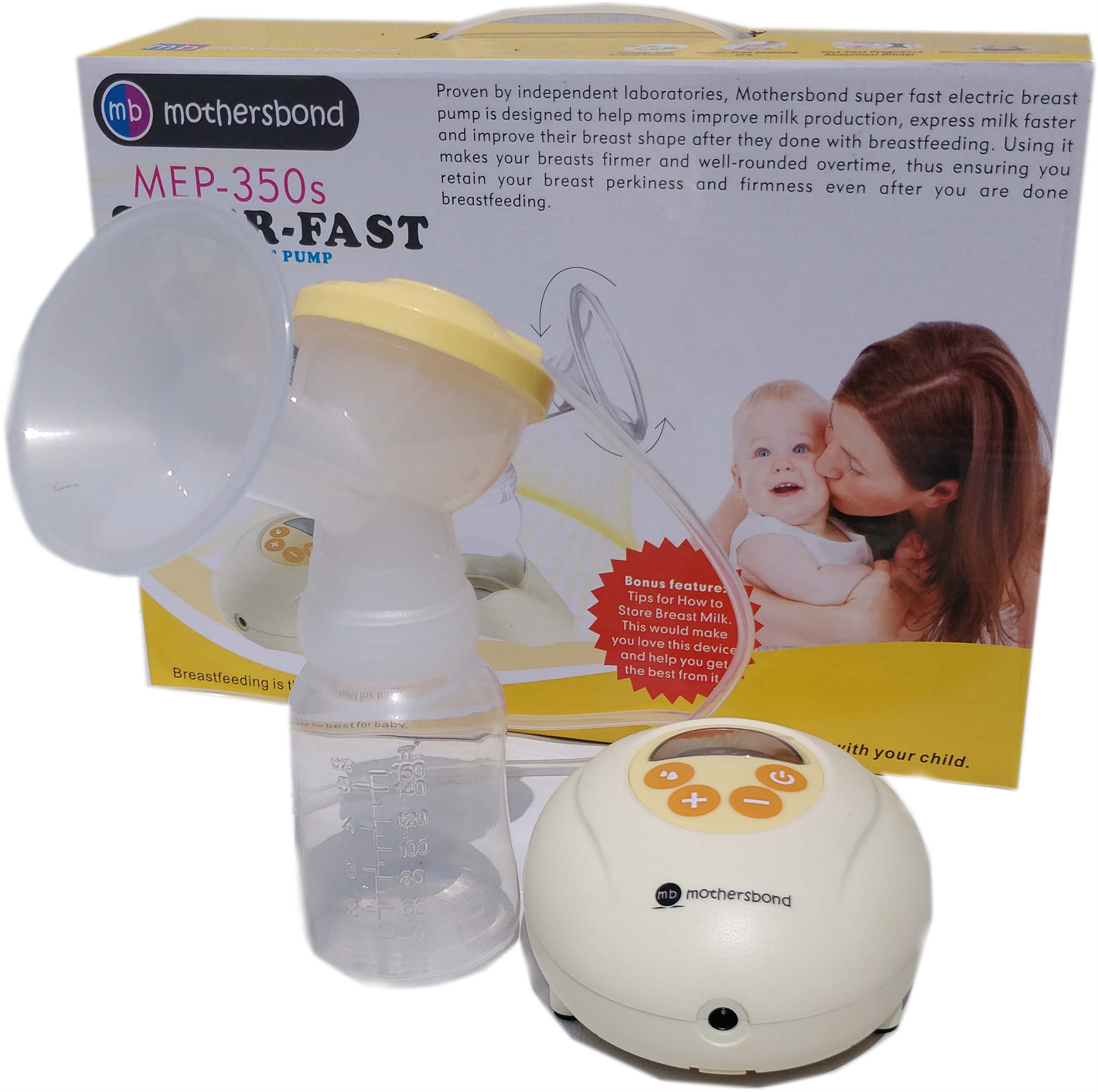
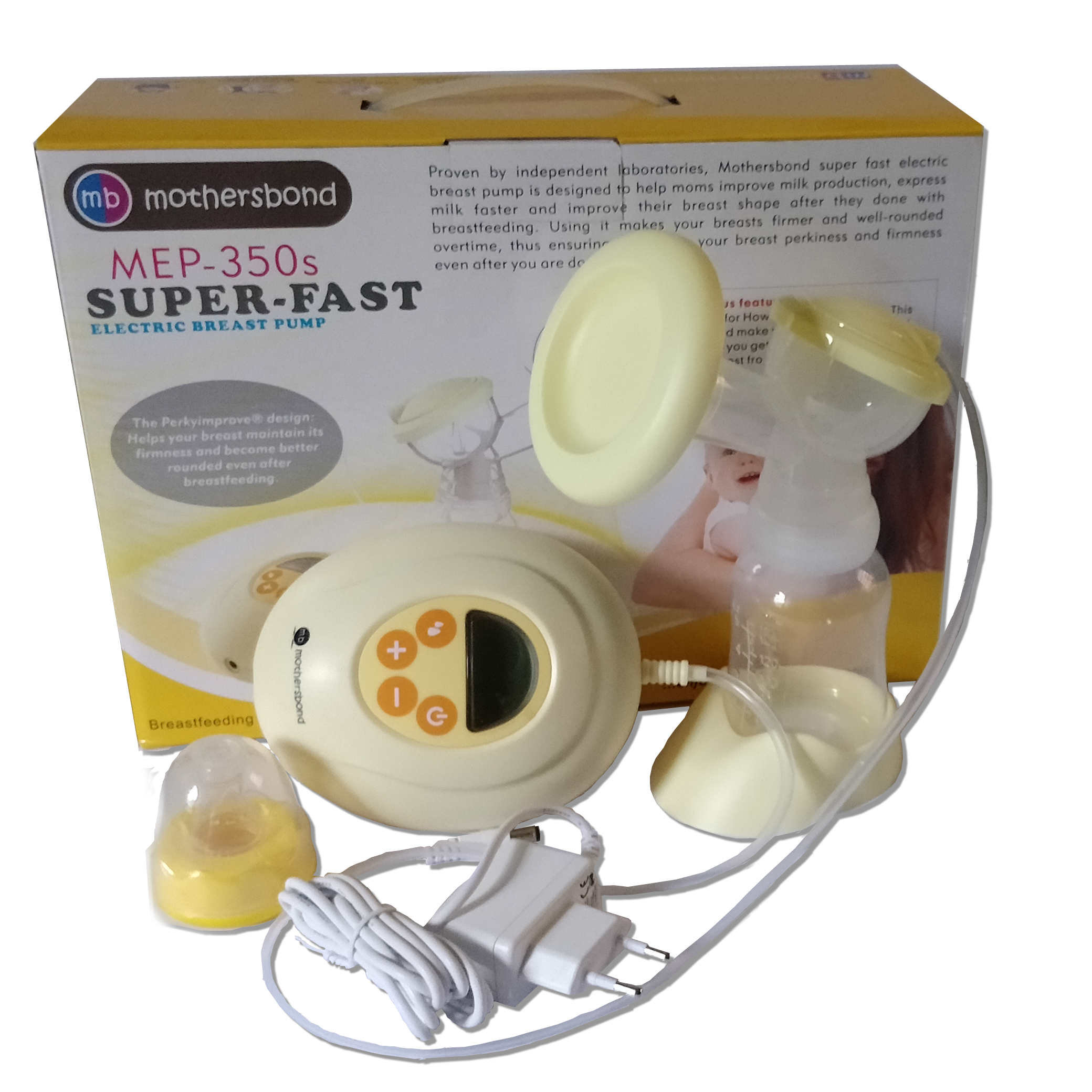
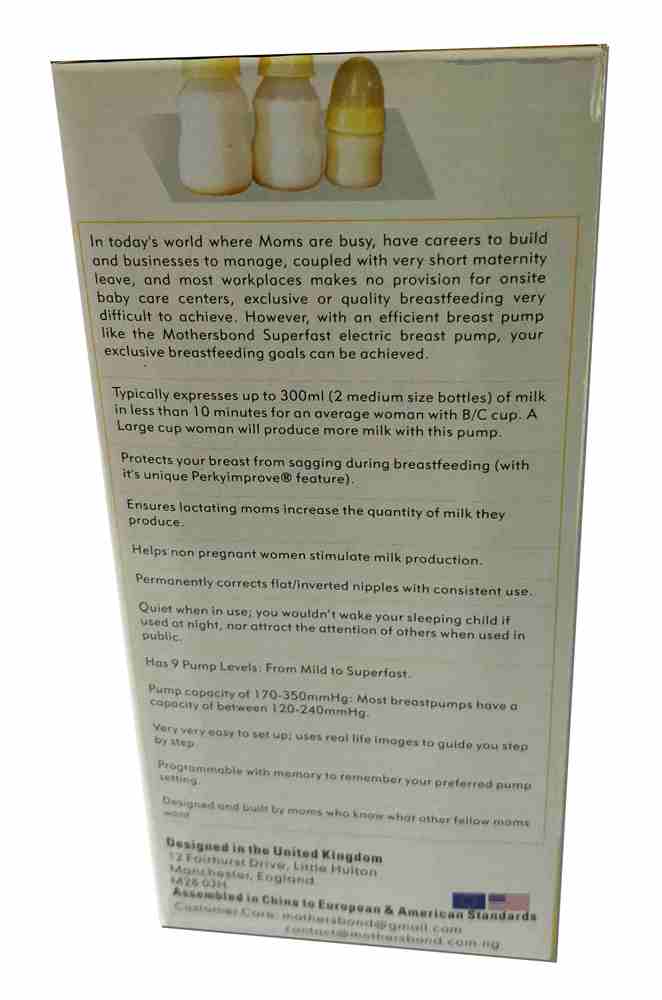


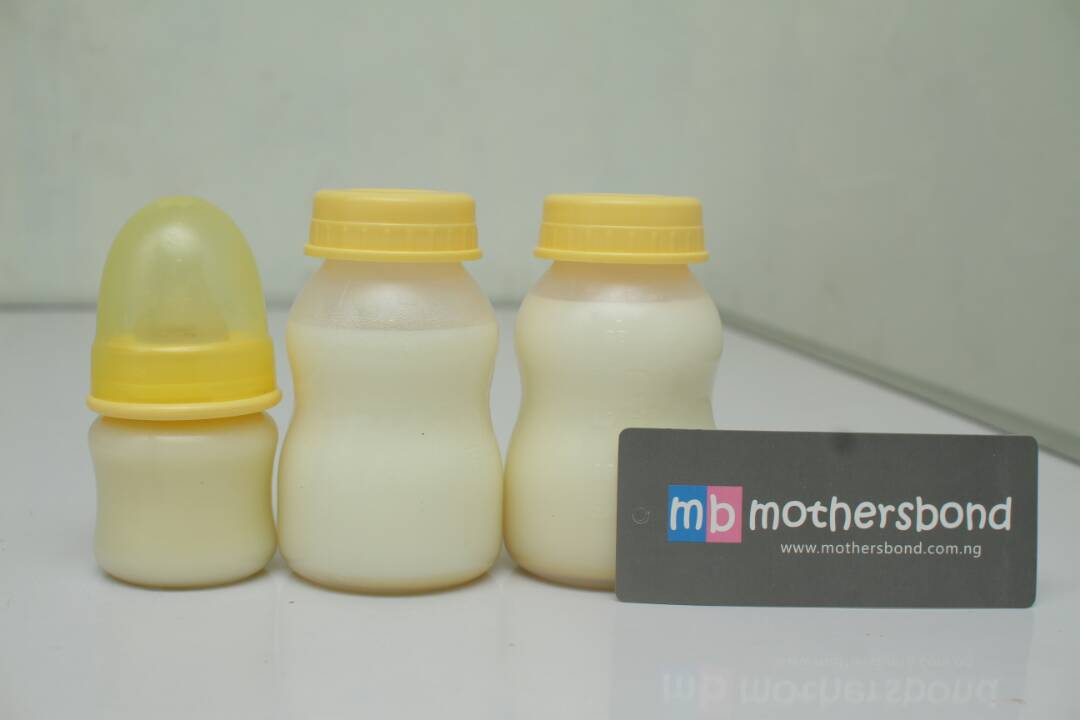

Hello, how can I get the abdominal binder please? Even though my baby is four months old will it still work for me?
Hi Elfreda,
Thank you for contacting us.
The Abdominal Binder costs N10,000 plus an extra cost for delivery which depends on where you are.
To get it, we need your name, address, and size. If unsure of your dress size, please use a tailors tape to measure your belly. Not waist, not hip, belly around the navel.
With this, we would process and send to you.